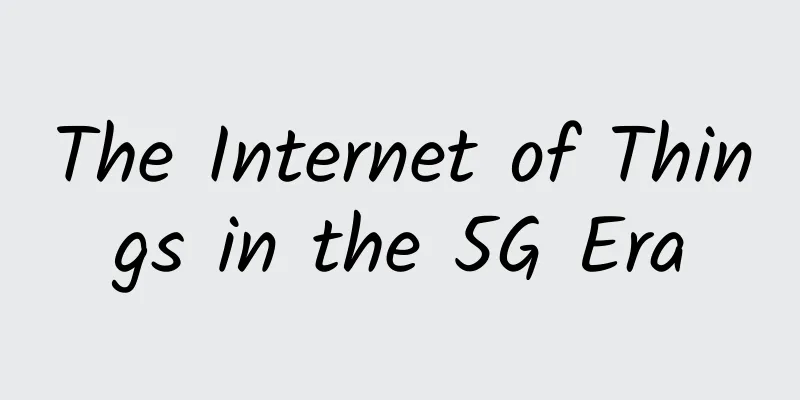RF chip, a pearl in 5G mobile phone

|
According to statistics, in the fourth quarter of 2020, my country's mobile phone market continued to transition from 4G to 5G, and the number of 5G mobile phone models accounted for 60%. In 2021, global smartphone shipments will reach about 1.355 billion units, of which 539 million will be 5G models. The pressure on manufacturing is really not small. The performance of 5G mobile phones depends on the two major chips inside - radio frequency (RF) and baseband. Let's take you to understand the mystery of RF chips.
Simply put, the function of the radio frequency chip is to send and receive information. Why is it so important? Without it, your mobile phone is just a big piece of metal worth thousands of dollars. Let's start with radio frequency. Radio frequency is radio frequency current, a high-frequency alternating electromagnetic wave, an electromagnetic frequency that can be radiated into space, and the frequency range is between 300KHz and 300GHz. Alternating current that changes less than 1000 times per second is called low-frequency current, and alternating current that changes more than 10,000 times per second is called high-frequency current. Radio frequency is such a high-frequency current (greater than 10K); radio frequency (300K-300G) is a higher frequency band of high frequency; microwave frequency band (300M-300G) is a higher frequency band of radio frequency. Radio frequency technology is widely used in the field of wireless communications, and cable TV systems use radio frequency transmission. The RF chip refers to an electronic component that converts radio signal communication into a certain radio signal waveform and sends it out through antenna resonance. It includes a power amplifier, a low-noise amplifier, and an antenna switch. The RF chip architecture consists of two parts: the receiving channel and the transmitting channel. How it worksThis is the schematic diagram of the RF circuit. The RF chip architecture consists of two parts: the receiving channel and the transmitting channel: When receiving, the antenna converts the electromagnetic waves sent by the base station into weak AC current signals, which are filtered and amplified at high frequency and then sent to the intermediate frequency for demodulation to obtain the received baseband information, which is then sent to the logic audio circuit for further processing. During transmission, the transmission baseband information processed by the logic circuit is modulated into the transmission intermediate frequency, and the transmission voltage-controlled oscillator TX-VCO is used to convert the transmission intermediate frequency signal into a frequency signal of 890M-915M (GSM). After amplification by the power amplifier, it is converted into electromagnetic waves and radiated by the antenna. For the existing GSM and TD-SCDMA modes, if the terminal supports an additional frequency band, its RF chip will add a corresponding receiving channel, but whether a new transmitting channel is needed depends on the interval between the new frequency band and the original frequency band. For mobile communication systems with receive diversity, the number of RF receiving channels is twice the number of RF transmitting channels. This means that the more LTE frequency bands a terminal supports, the more receiving channels its RF chip will have. For example, if M GSM or TD-SCDMA frequency bands are added, the number of RF chip receiving channels will increase by M; if M TD-LTE or FDD LTE frequency bands are added, the number of RF chip receiving channels will increase by 2M. The LTE spectrum is relatively scattered compared to 2G/3G. In order to achieve international roaming through FDD LTE, the terminal needs to support more frequency bands, which leads to the challenge of increased cost and volume of RF chips. In fact, designing a good RF chip is still a headache. First of all, RF chip design requires a lot of theoretical knowledge, and many design theories are even considered "mysterious". In addition, the design of RF chips involves a compromise between various indicators. What kind of compromise is the best? How to compromise depends on the actual application requirements of the product, and there is no definitive answer. Furthermore, many RF chip indicators require challenges to process limits, which requires many innovative circuit structures, such as noise cancellation, intermodulation component cancellation, and dynamic biasing to improve power amplifier efficiency. Sometimes, every possible way is tried to reduce power consumption. The hard difficulty is still the process and packaging. The most important indicators of RF chips are noise coefficient and linearity. These two indicators are completely related to the process. For example, various noise interferences will be coupled to the CMOS process substrate, and the linearity of CMOS devices is also very poor. This problem is a hard flaw. If it is not solved well, it can only be alleviated through appropriate circuit structure or some isolation measures that cannot be quantitatively analyzed, which will lead to a lot of uncertainty. In addition, there is a trade-off between parasitic parameters, parasitic resistance, capacitance and frequency. The final packaging is also a major difficulty. A small package lead is an inductance of more than 1nH, and these inductors have a huge impact on the RF chip. Under the premise of controllable costs, we should try to use advanced packaging to reduce the lead inductance caused by the package. For 5G RF chips, on the one hand, the increase in frequency causes the connection lines in the circuit to have a greater impact on the circuit performance, and the length of the signal connection lines needs to be reduced during packaging; on the other hand, the power amplifier, low-noise amplifier, switch and filter need to be packaged into a module, which can reduce the volume and facilitate the use of downstream terminal manufacturers. In order to reduce the parasitics of RF parameters, Flip-Chip, Fan-In and Fan-Out packaging technologies need to be adopted. It can be seen that in the 5G era, high-performance Flip-Chip/Fan-In/Fan-Out combined with Sip packaging technology will be the trend of future packaging. Players' InventoryThe cost is high, and 95% of the market is controlled by European and American manufacturers Normally, the RF chips used in a mobile phone motherboard account for 30%-40% of the entire circuit panel. It is reported that the cost of the RF chip alone for an iPhone 7 is as high as $24. There are reports that Apple's investment in RF chips for each mobile phone this year will historically exceed $30. With the acceleration of smartphone iterations, RF chips will also usher in a wave of peaks. At present, most of the core components in mobile phones have been domestically produced, but radio frequency components are still struggling. It is reported that about 95% of the global market is controlled by European and American manufacturers, and not even a single Asian manufacturer has entered the top ranks. Let's take a brief inventory of domestic and foreign players in this circle: domestic
foreignSkyworks The leader in RF components and Apple's RF supplier, its main business is RF front-end products, including RF power amplifiers (i.e. RF PA), various filters, mixers, attenuators, etc. Qorvo (RFMD and TriQuint) Qorvo was formed through the merger of RFMD and TriQuint. Combining the technologies, collective experience and intellectual resources of RFMD and TriQuint, Qorvo is a global leader in scalable and dynamic RF solutions for mobile, infrastructure and defense applications. TriQuint (Super Group Semiconductor, merged with RFMD) Murata (acquired the power amplifier business of Renesas): Murata's main products include ceramic capacitors, ceramic filters, high-frequency components, wireless sensors, etc. A while ago, Murata announced the acquisition of Italian wireless radio frequency (RFID) technology startup ID-Solutions to accelerate the layout of the Internet of Things. Epcos is one of the world's largest electronic component manufacturers, with its products mainly sold in the communications, consumer, automotive and industrial electronics sectors. In addition, there are NXP, Cree, Macom, Maxim Semiconductor, ADI, Infineon, Avago (acquired Broadcom's wired/wireless chip business), Broadcom Integrated, Qualcomm, Samsung... |
>>: Comparison of IT industry salaries in 2021
Recommend
China Telecom and Huawei establish a joint business innovation center to achieve win-win business through innovative cooperation models
China Telecom and Huawei jointly announced the es...
Cisco ushers in a new era of networking
The recent WannaCry ransomware cyberattack target...
Tongyou Technology will make further efforts, and "autonomous and controllable" masterpieces will be released soon
This year, "Digital China" was written ...
From comfort zone to challenge zone, operators enter a period of deep adjustment
Data released by the Ministry of Industry and Inf...
How 5G frequencies affect range and speed
Experts say that while 5G technology is a huge im...
Ministry of Industry and Information Technology: China's 5G investment reached 184.9 billion yuan in 2021
On January 25, China's Ministry of Industry a...
Will your package be slowed down if you don’t upgrade to 5G? 4G network speeds of the three major operators were measured in four locations in Beijing
"China Unicom launched a 5G package for 239 ...
I've been waiting for 10 years for the technology that allows me to surf the Internet on airplanes. Where does it come from?
In the past, when we were on an airplane, the fli...
Is the time ripe for “rate experience billing” in 5G multi-dimensional billing?
July 5 During the just-concluded mobile communica...
Five strategies for enterprises to start 5G digital transformation
Of course, 5G has been in the spotlight in 2020. ...
From ServiceMesh to Decentralized SOA Bus
I have talked about service mesh, API gateway and...
ZJI: New Year limited 50% off Hong Kong server 500 yuan/month-2*E5-2630L/32G memory/1TB SSD/20M bandwidth
ZJI has just launched a new year promotion, offer...
QuickPacket: $69/month - E5-2683v4 CPU, 64G memory, 1TB or 500G SSD, 50TB monthly traffic, Los Angeles data center
I searched and found that the last information ab...
Testing infrastructure is like a butcher's knife, WOT Ru Bingsheng tells you how to avoid "falling into the trap"
【51CTO.com original article】Seven years of hard w...
Why are there IPv4 and IPv6, but no IPv5? What is IPv10?
As the country vigorously promotes the developmen...









